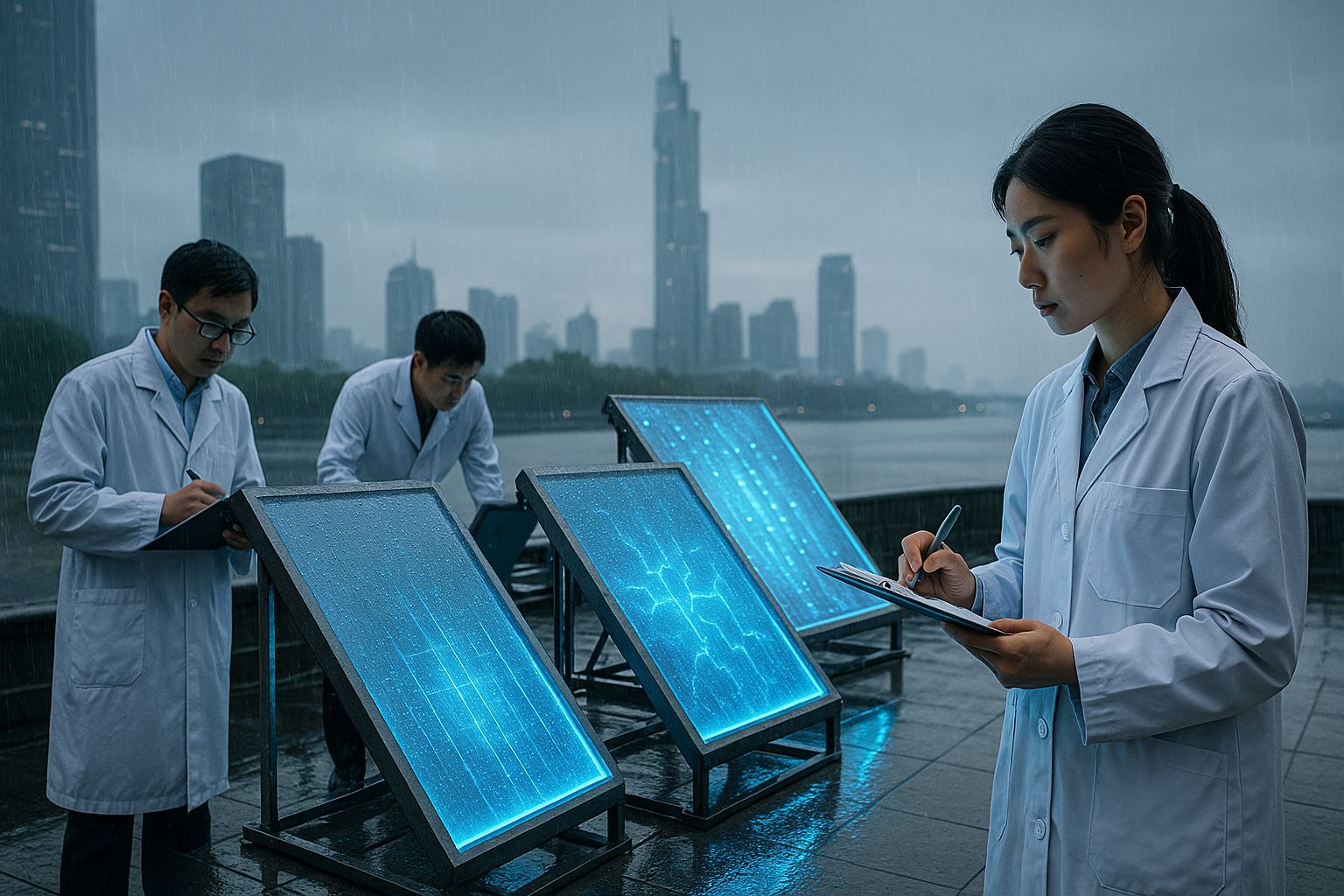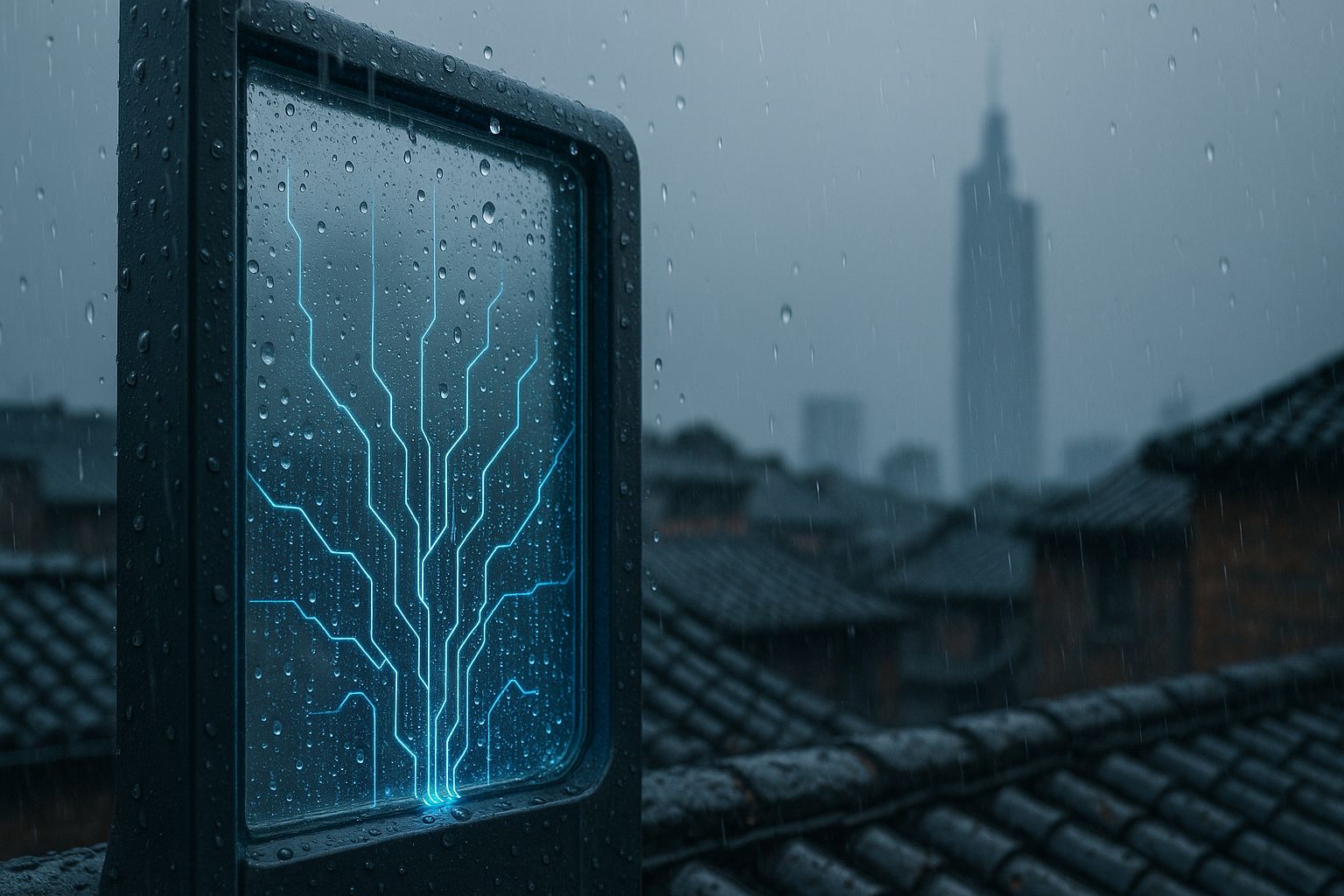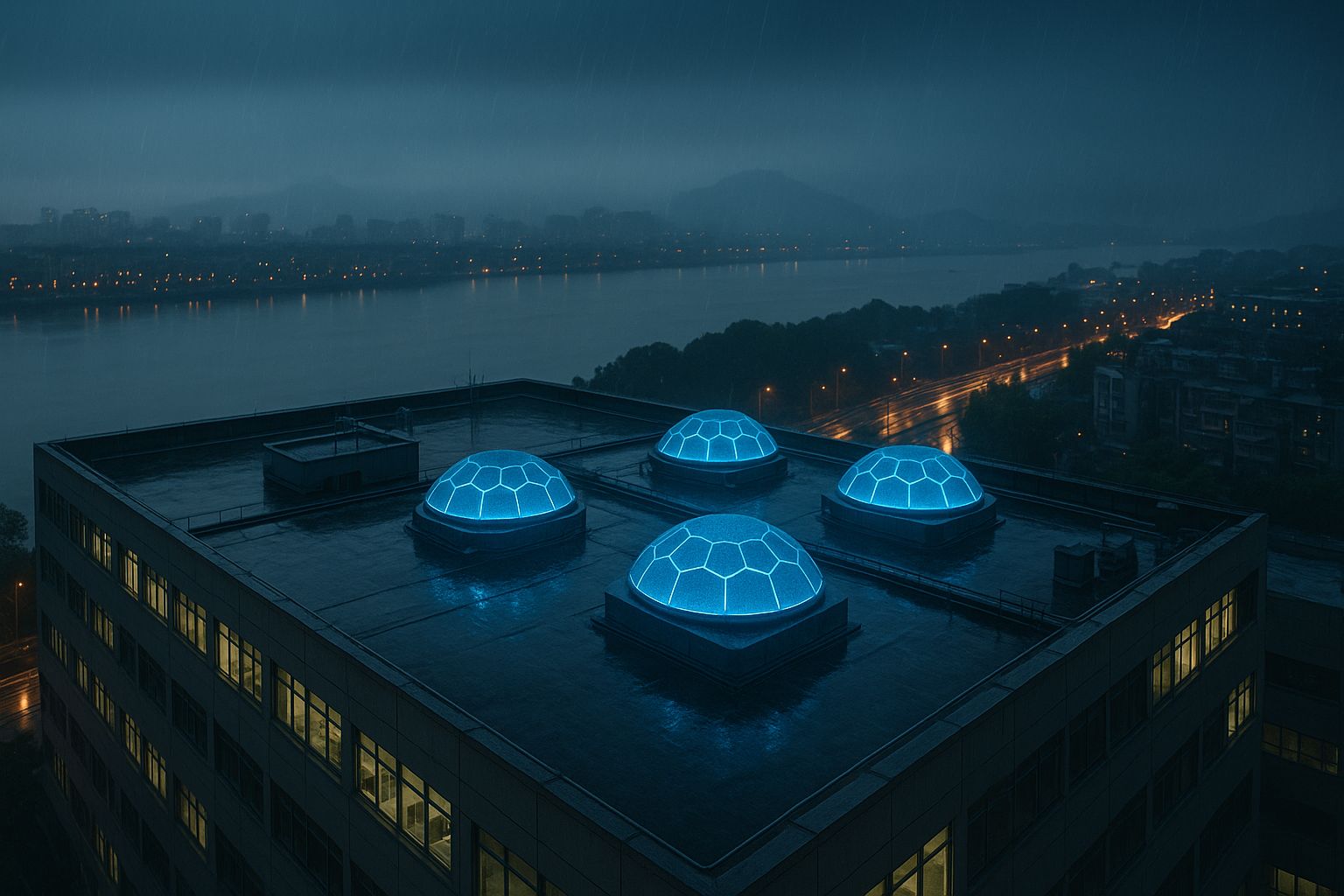- Green Glow
- Posts
- 🌱 How Nanjing Scientists Are Transforming Rainfall Into Sustainable Electricity 🌧️⚡
🌱 How Nanjing Scientists Are Transforming Rainfall Into Sustainable Electricity 🌧️⚡
Scientists at Nanjing University have developed a floating device that turns raindrops into electricity, marking a major breakthrough in renewable energy. Discover how this lightweight, water-based generator transforms rainfall into sustainable power and what it means for the future of clean energy.
As the world searches for cleaner, more diverse energy sources, a remarkable innovation from China’s Nanjing University of Aeronautics and Astronautics is making waves — quite literally. Scientists there have discovered a way to turn rainfall into sustainable electricity using a device that floats on water and captures the kinetic energy of each falling drop. This breakthrough could redefine how we think about renewable energy, especially in places where solar and wind struggle to perform.
Table of Contents

The Science Behind the Innovation
The technology, known as a Water-based Droplet Electricity Generator (W-DEG), is designed to convert the impact of raindrops into usable electrical energy. When a raindrop strikes the surface, it triggers an energy conversion process that generates an electrical charge — much like how piezoelectric materials convert mechanical pressure into power.
What sets the W-DEG apart from earlier models is its floating design. Traditional droplet electricity generators rely on heavy, rigid bases, often made of metal, and are installed on land. In contrast, the W-DEG floats on water, using the liquid beneath it as both an electrode and a structural support. This not only reduces material costs but also makes the device flexible, lightweight, and adaptable to natural water bodies.
Key Breakthroughs and Performance
According to the research published in the National Science Review, the W-DEG can produce up to 250 volts per droplet impact — a staggering result for such a compact system. The team reported several advantages over conventional setups:
87% lighter weight: The floating system weighs around 0.5 kg per m² compared to 4 kg per m² for traditional devices.
Cost efficiency: Production costs are reduced by roughly half, thanks to simpler materials and water-based operation.
Versatility: It performs effectively in both fresh and saltwater environments, even when exposed to biofouling.
Durability: Built-in self-draining holes prevent water accumulation and surface contamination, ensuring consistent operation during heavy rainfall.
These features make the technology highly adaptable for lakes, reservoirs, and coastal areas — unlocking new potential for renewable energy generation on water surfaces worldwide.
Why Floating Power Matters
The floating nature of this technology provides several unique advantages. First, it eliminates the need for large land installations, addressing one of the biggest challenges facing solar farms and wind turbines. Second, it can operate during conditions that typically hinder other renewable systems — cloudy, stormy, or low-wind days.
This makes raindrop energy a perfect complement to existing renewables. Imagine a hybrid system where lakes are lined with floating panels that collect solar energy by day and raindrop energy during storms. It’s a concept that could revolutionize the way microgrids and rural communities generate power.

Real-World Applications and Future Potential
While still in the experimental stage, the W-DEG has already demonstrated practical use cases. The researchers successfully powered a small wireless sensor using raindrop energy — a glimpse of how this technology could enable remote monitoring systems in lakes, reservoirs, and marine research stations.
Looking ahead, the floating droplet generator could support:
Autonomous water sensors for environmental monitoring
Smart city infrastructure using rain-harvested power
Off-grid power systems for rural or coastal communities
Complementary systems alongside solar or wind installations
With continued development, raindrop energy could become a vital piece of the renewable energy puzzle, especially for regions with heavy rainfall or monsoon seasons.
Challenges Ahead
Despite its promise, the path to large-scale adoption isn’t without hurdles.
Energy output per square meter remains limited — real-world rainfall varies, and consistent power generation requires storage systems like batteries or capacitors.
Durability in extreme weather, long-term corrosion, and wave conditions will need rigorous testing.
Economic scaling — while prototypes are inexpensive, deploying thousands of floating units across vast bodies of water poses logistical challenges.
Nevertheless, these are typical growing pains of any groundbreaking energy technology, and researchers are confident that improvements in materials and design will gradually overcome them.

Conclusion
The Nanjing team’s floating raindrop generator represents a fascinating evolution in sustainable energy science. It transforms something as ordinary as rain into a renewable resource — lightweight, adaptable, and endlessly abundant.
In a world where every drop counts, this innovation reminds us that nature itself holds untapped answers to humanity’s energy challenges. From sun to wind to rain, the sky may well become our most powerful power plant.
FAQs
What is the W-DEG device?
The Water-based Droplet Electricity Generator (W-DEG) is a floating device that converts the kinetic energy of falling raindrops into electricity using water as both the electrode and the support base.
How much electricity can it generate?
Each raindrop impact can produce a voltage of around 250 V, but total power output depends on rainfall intensity and device size.
Can it work in seawater or polluted environments?
Yes. The W-DEG has been tested in saline water and biofouling conditions and maintained stable performance, thanks to its self-cleaning design.
When will this technology be commercially available?
It’s still in the research phase, but early prototypes suggest potential for future use in environmental monitoring, off-grid power systems, and hybrid renewable installations.
How does this differ from solar or wind power?
Unlike solar or wind, raindrop-based power works best in wet or cloudy conditions, making it an ideal complement rather than a competitor to existing renewables.
You May Also Like
External Links
Trump is tackling every ‘emergency’ except the important one — climate change
World climate report warns of growing risks to lives, economy and planet
Secret Energy Department "hit list" targets renewable energy industry
Renewable energy jumps to new high, powered by China solar boom
How do renewable energy mandates contribute to your electric bills? Follow the money
Follow Us:
X: https://www.x.com/greenglownews
Youtube: https://www.youtube.com/@greenglownews
Instagram: https://www.instagram.com/greenglownews
Sponsored Links